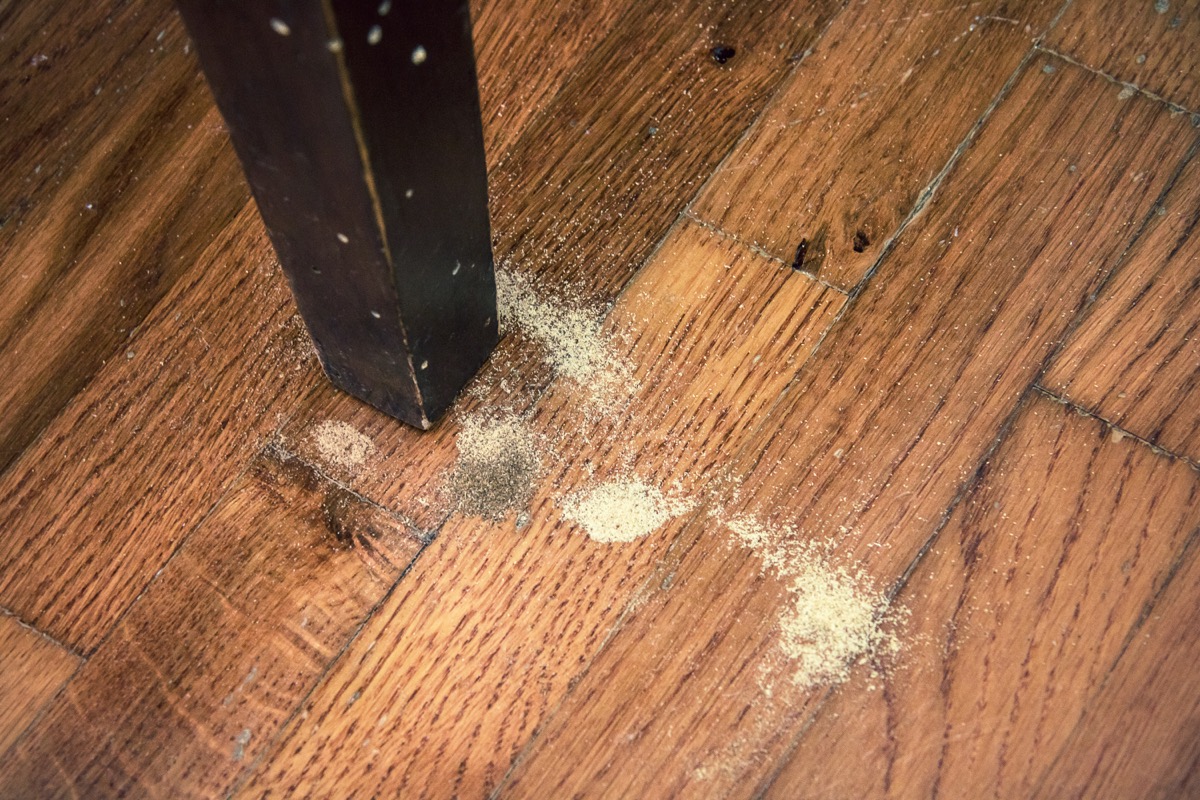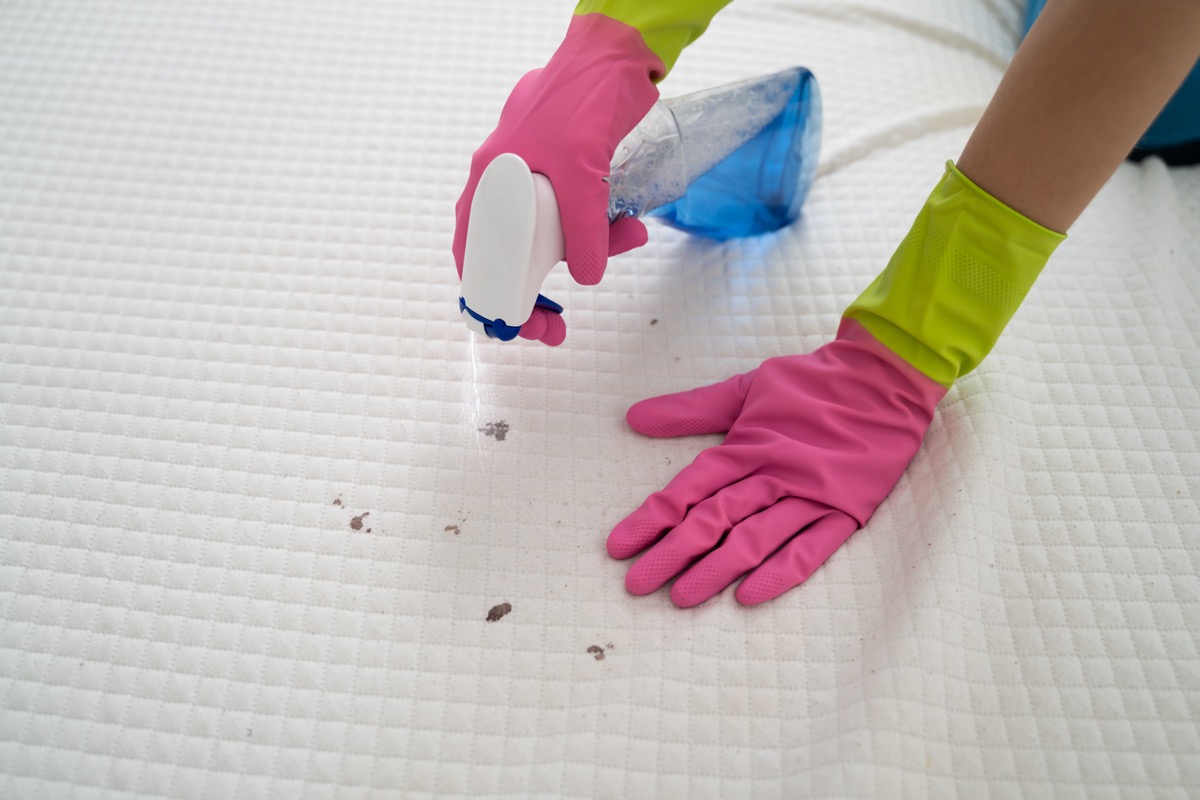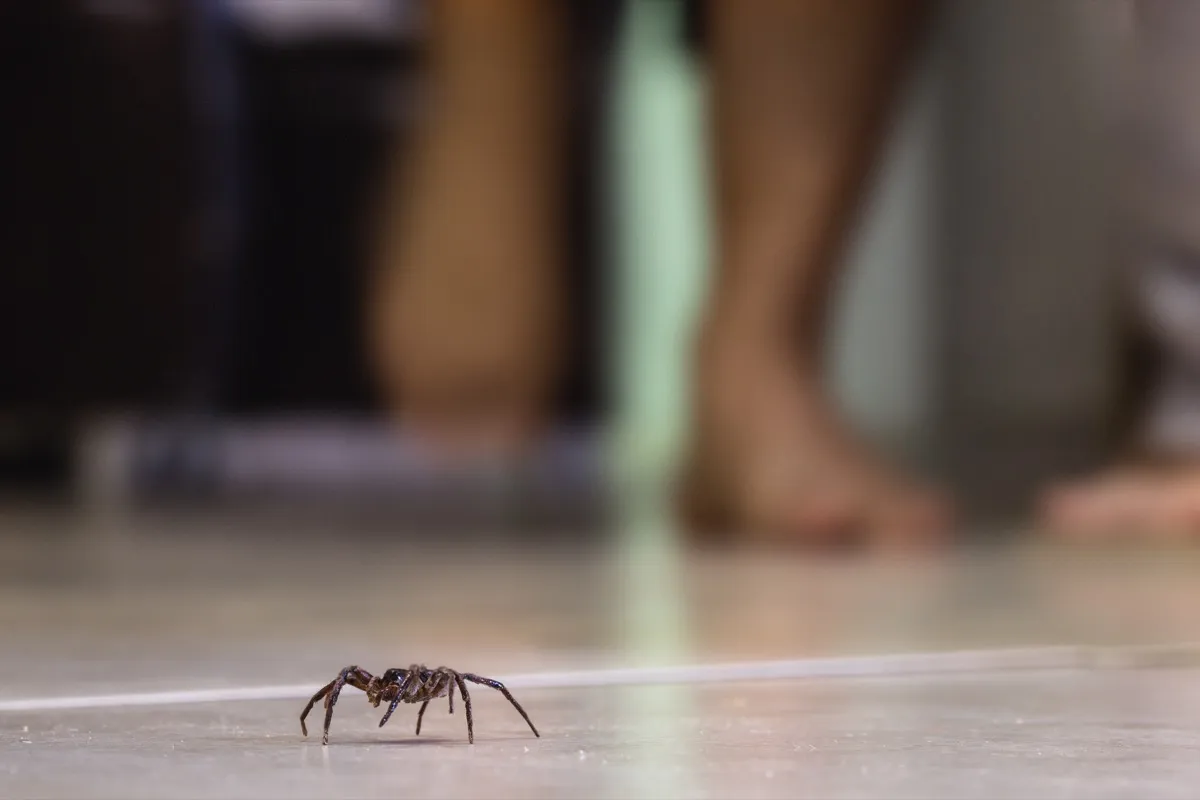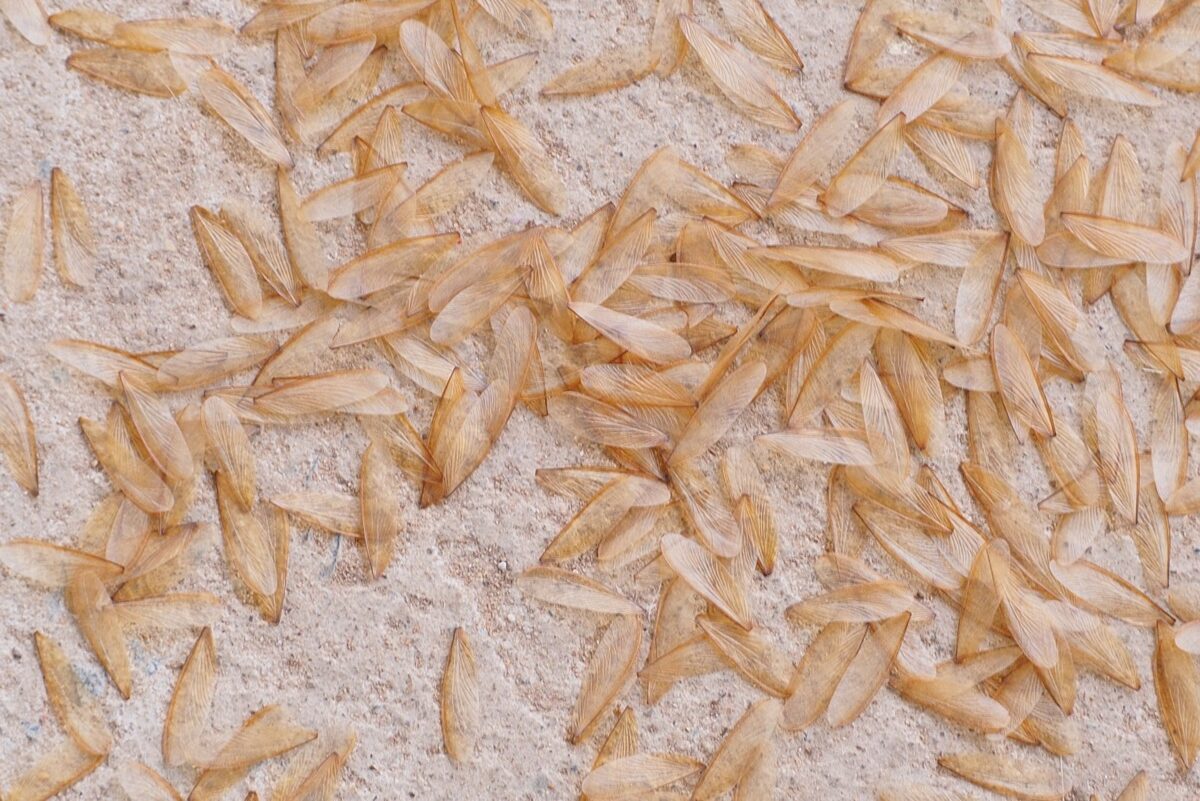It’s not always bugs themselves that signal their presence in your home—in many cases, it’s the animals that prey on those insects that will tip you off to an infestation. “If you spot woodpeckers pecking at your home, deck, or other structures, it can be a sign you have carpenter bees,” says board-certified entomologist Natasha Wright, technical director at Braman Termite & Pest Elimination of Southern New England. Wright says that people should look for perfectly round holes in their woodwork, which are telltale signs that carpenter bees have already infiltrated the woodwork in or surrounding a home. RELATED: These Awful Bugs You Forgot About May Soon Come Back, Exterminators Warn. If there hasn’t been any recent construction done on your home, but you’re still finding piles of sawdust around your space, you may be dealing with a carpenter ant infestation. “Carpenter ants don’t actually eat wood; they excavate it to create their nests, which can cause a lot of structural damage to a home or building,” says Wright. “Unlike termite signs, these piles [created by carpenter ants] are closely related to sawdust and often found indoors, where termites leave a more mud-like consistency and traditionally are found around your perimeter or in the crawlspace,” explains Dan Rottler, owner of Rottler Pest Solutions in St. Louis, Missouri. The good news? That rustling you hear in your walls at night isn’t necessarily a sign you’ve got a rodent problem. The bad news? It may be an indication you have a carpenter ant infestation.ae0fcc31ae342fd3a1346ebb1f342fcb “You may actually be able to hear this species at work as a faint rustling sound behind your walls, especially at night when they are most active,” Wright notes. She says that if you tap on a piece of wood in your house and it sounds hollow, that may be yet another sign carpenter ants have infiltrated. For more home safety news delivered right to your inbox, sign up for our daily newsletter. Those spots on your sheets may be more than just an indication you need to wash your linens more often. “One of the biggest telltale signs of bed bugs are bloodstains on your sheets or pillowcases, or dark or rusty colored spots on your bedding or mattress, as well as the walls near your bed,” says Bernard Buttone, COO at Triangle Pest Control, serving Raleigh and Charlotte, North Carolina. “Once you see these signs, that means you’re already dealing with an infestation, so it’s time to act quickly.” RELATED: 5 Things You’re Buying That Bring Bed Bugs Into Your House, Experts Say. Seeing a large number of spiders in your home may make you think you have an arachnid infestation, but the real issue may be far worse. “Having lots of spiders around your household doesn’t mean that you have a spider infestation,” says entomologist Nicholas Martin, PhD, founder of Pest Control Hacks in Oklahoma City, Oklahoma. “Logically, spiders won’t gather in a place without food, which means that a large number of them is a true sign your house is infested with something else.” While spiders frequently eat flies, moths, and mosquitoes, they’re also known to eat termites and cockroaches, so you may want to hire an exterminator to make sure you don’t have a larger infestation on your hands. If you’ve been noticing stray pairs of bug wings around your home on a regular basis, there are likely hundreds more where those came from—and you can’t waste any time before calling an exterminator. “After termites reproduce, they shed their wings, and the whole colony often sheds them into a semi-neat pile of wings,” says Eric Hoffer, president of Hoffer Pest Solutions, serving Southeast Florida. “If you see this pile, that means termites are very close so you’ll have to act fast to limit or prevent any damage.” RELATED: If You See This Bug, You Need to Vacuum It Up Immediately, Experts Say.





